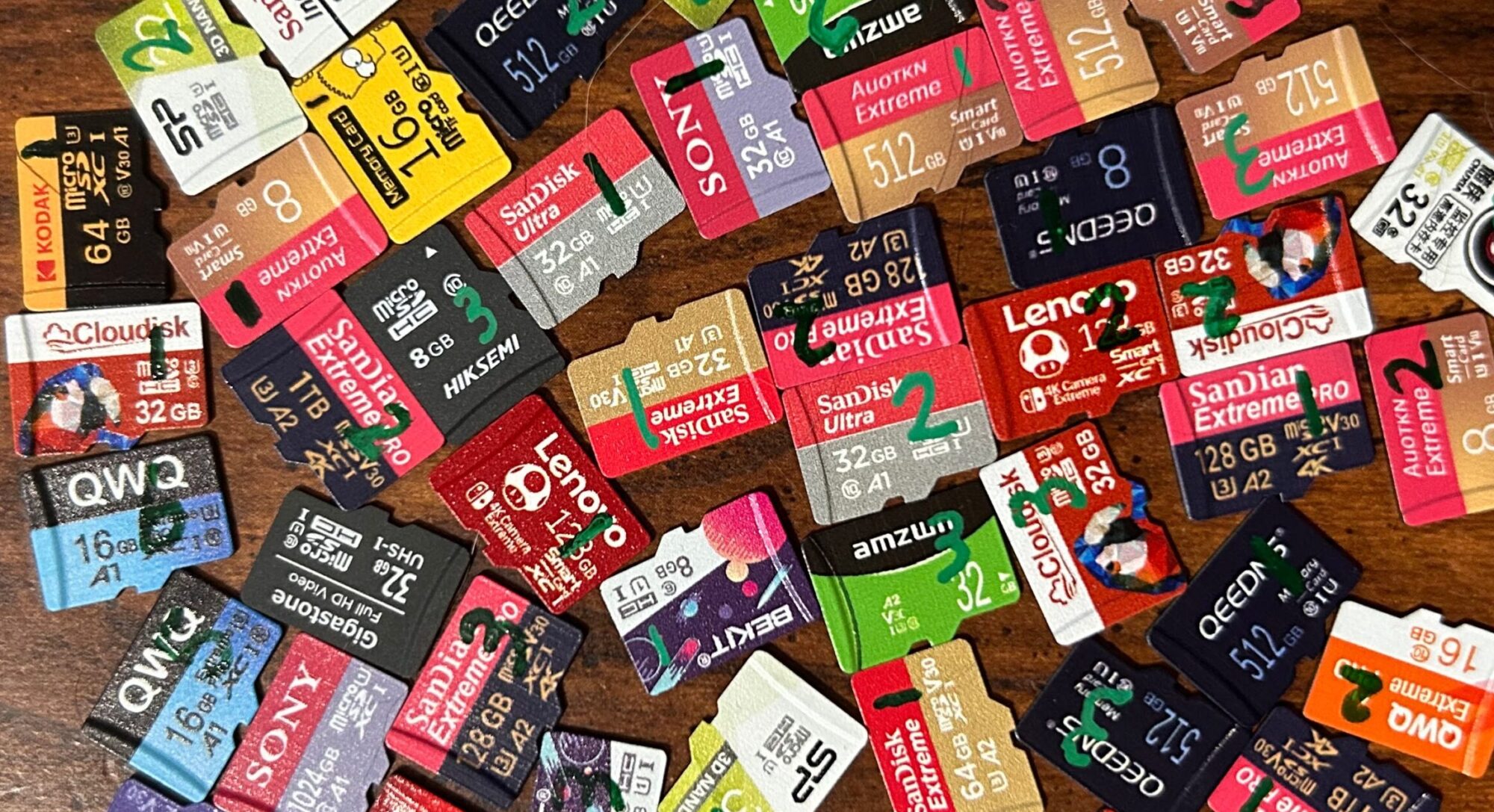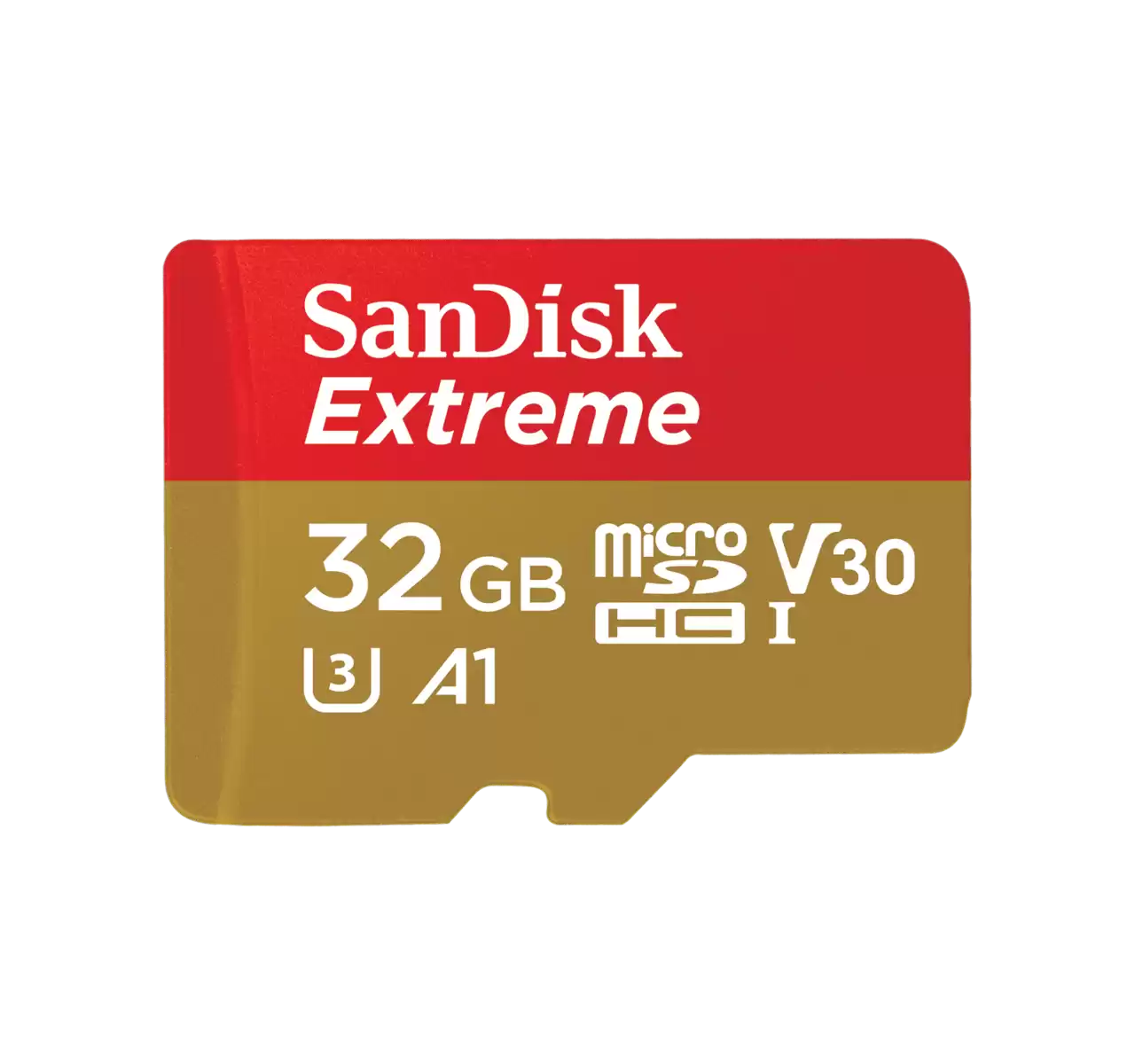SanDisk is a well-known name in the flash memory industry. Founded in 1988, they developed the first flash-based SSD. They were later acquired by Western Digital in 2016, before being spun off as a public company in early 2025.
SanDisk is a name I’ve long been aware of, and one that — prior to this project — I was biased in favor of. I have a number of single-board computers that take microSD cards, and I typically defaulted to the SanDisk Ultra 16GB for their storage — and most of the time, had no issues with them. And since they’re such a major brand, I wanted to make sure they were properly represented in this project.
I ordered these particular cards in different batches. Sample #1 came from Amazon; samples #2 and #3 came from AliExpress. The packaging for the two version was practically identical. The cards themselves, however, were slightly different: the version I got from Amazon has a product name of SM32G, while the two I got from AliExpress have a product name of SN32G. The manufacture date (in the CID register) indicated that the Amazon version was the older of the two — by almost 3½ years.
On the performance testing front:
- There was a considerable difference in sequential read speeds between the Amazon version and the AliExpress version of this card: the AliExpress version scored above the 91st percentile in sequential read speeds (as of the time of this writing), while the Amazon version only scored at about the 30th percentile.
- Sample #1 also did worse in sequential write, random read, and random write measurements, although the differences were less pronounced:
- Sequential write: All three scores were clustered pretty closely together, placing them between the 76th and 85th percentiles.
- Random read: Sample #1 performed significantly worse than the other two samples, coming in at the 63rd percentile. The other two samples came in at the 82nd and 85th percentiles.
- Random write: Sample #1 performed significantly worse than the other two samples, coming in at the 46th percentile. The other two samples came in at the 61st and 62nd percentiles.
These cards carry the U3, V30, and A1 markings. Performance test results on all cards were good enough to qualify for the U3 and V30 markings; however, none of them scored well enough to qualify for the A1 marking. However, I’ll throw in my standard disclaimer here: my performance testing methods do not align with those prescribed by the SD standard. It’s possible that they would have done better had they been tested under proper conditions.
On the endurance testing front:
- Sample #1 was doing great until the circuit breaker — to which the host machine was attached — tripped. After restoring power, all of the other cards attached to this machine resumed their testing just fine; however, this one decided to stop responding to commands afterwards.
- Sample #2’s first error was an address decoding during round 75. It has survived 11,168 read/write cycles in total so far.
- Sample #3’s first error was an address decoding error during round 71. It has survived 10,874 read/write cycles in total so far.
Overall? On average, they’ve done well — sequential I/O speeds and random read speeds were above average (even though random write speeds were below average), and endurance has been above average so far. However, there are a couple of things that concern me:
- Individually, sample #1 has been a problem — sequential read and random write speeds were below average, as was endurance. This could be indicative of issues with the older version of the card; however, there wasn’t anything on the package to distinguish the two versions — meaning that if you buy one, you can’t be certain which version you’re getting until you’ve opened the package.
- SanDisk cards — as noted by embeddedTS when they did similar stress testing of some SanDisk cards — seem to have a problem with failing in the event of a brownout. My experience so far has been consistent with that assessment. Sample #1 might have lasted much longer had it not fallen prey to that issue.
So I guess I would say “these are decent cards in terms of performance, but be careful with how you use them and be aware that they could fail in the event of a brownout”.
June 24, 2025 (current number of read/write cycles is updated automatically every hour)

